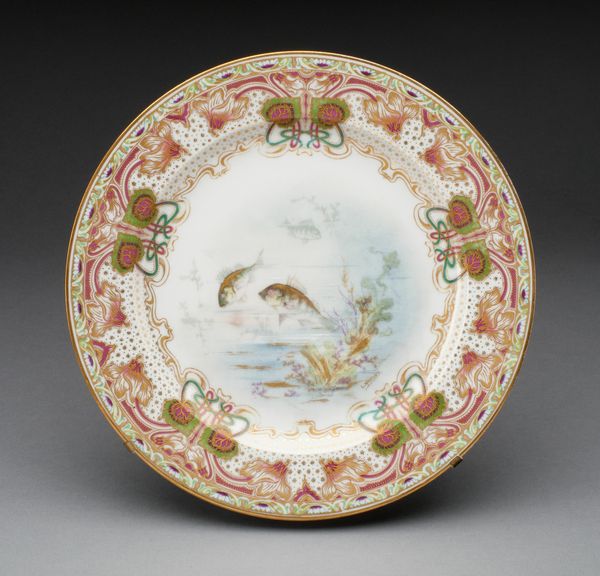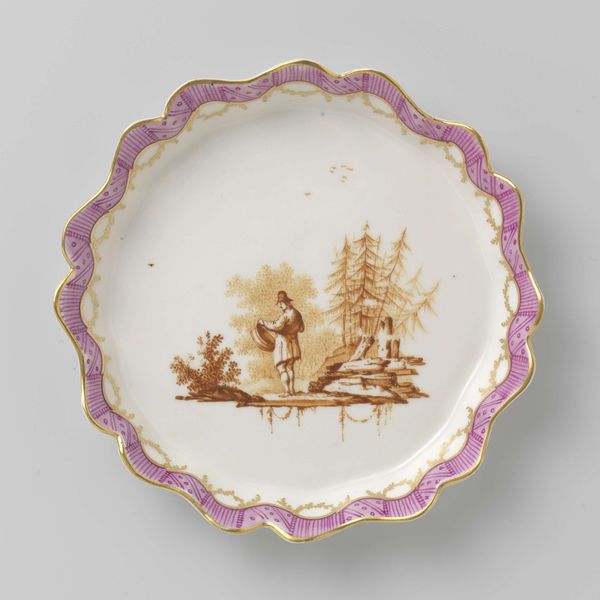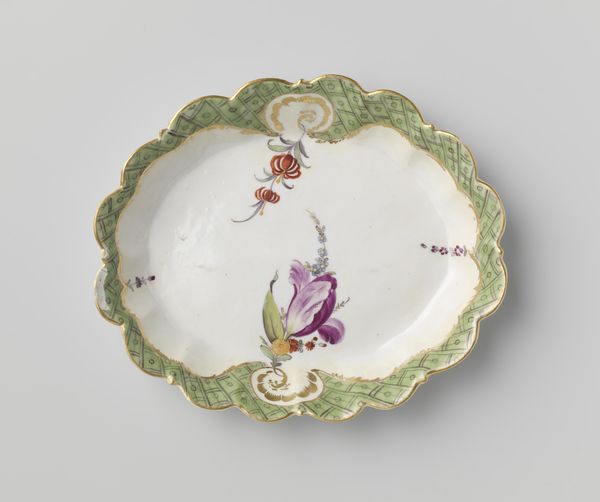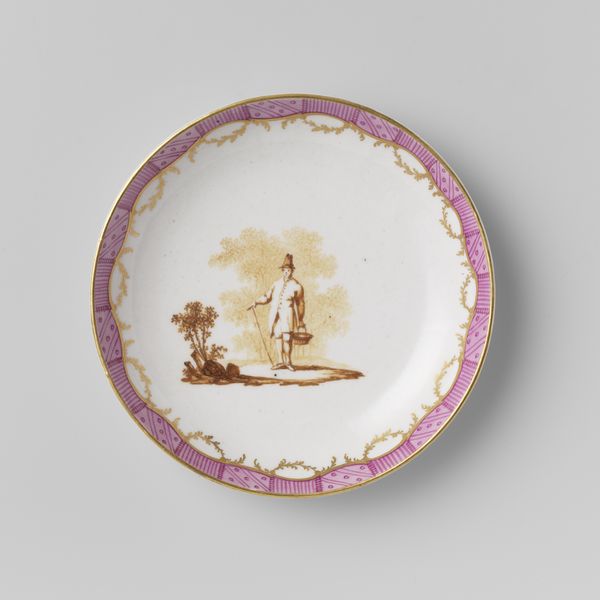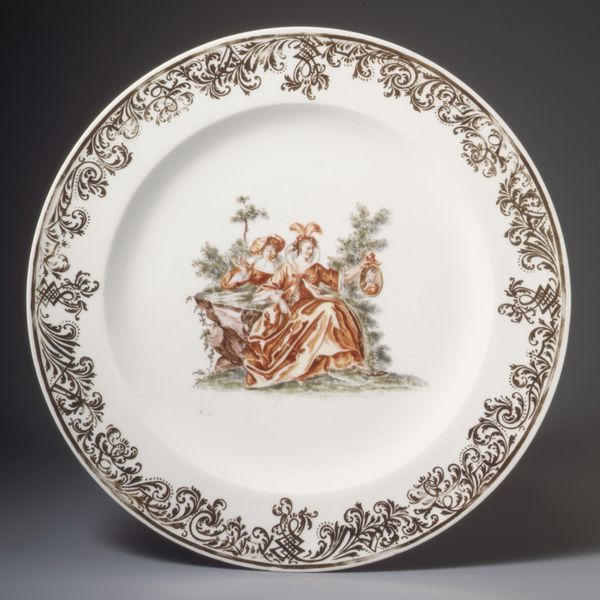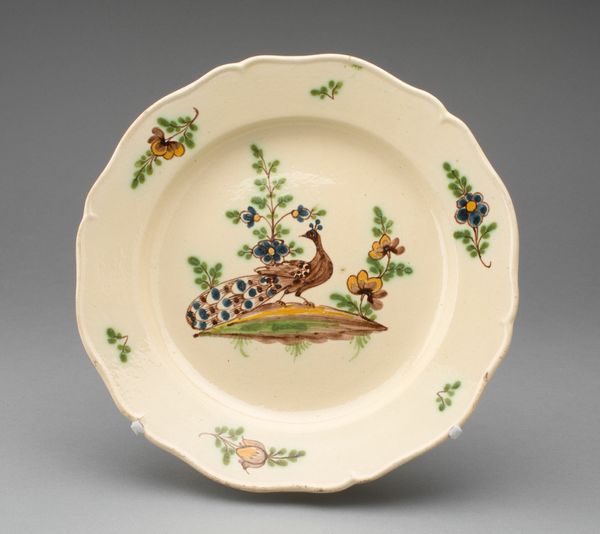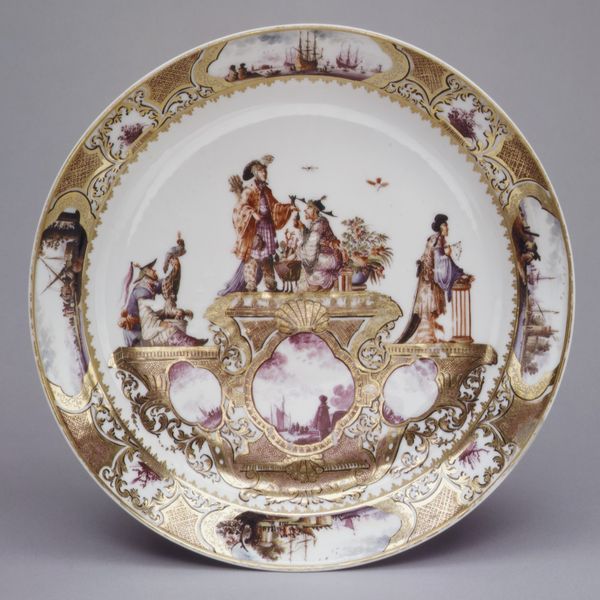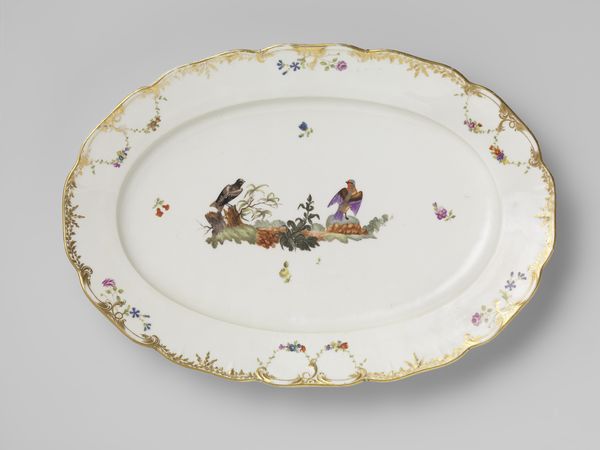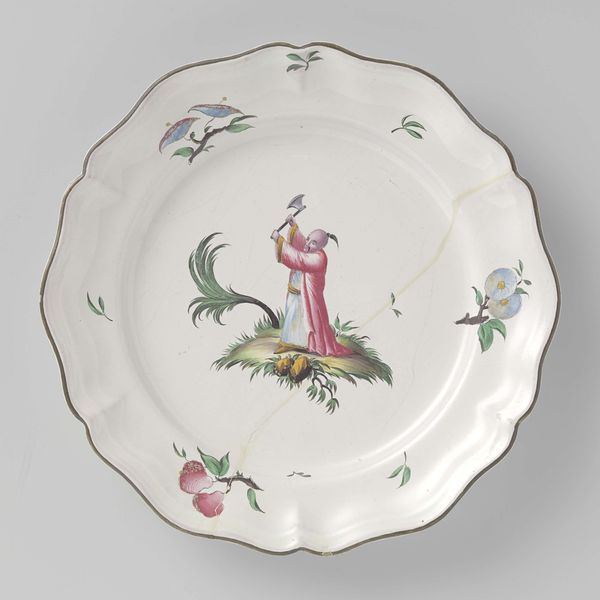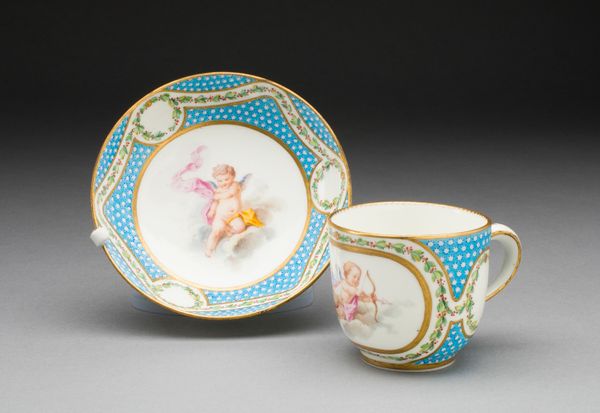
ceramic, porcelain, pendant
#
allegory
#
ceramic
#
porcelain
#
figuration
#
ceramic
#
genre-painting
#
rococo
#
pendant
Dimensions: height 3.5 cm, diameter 20.6 cm, diameter 13.5 cm
Copyright: Rijks Museum: Open Domain
Curator: Oh, isn't that charming? A "Dish, cup and saucer," dating roughly from 1750 to 1774. The artist is anonymous, and the decoration is rendered in porcelain, part of a larger trend in the Rococo era where functional items became canvases for elaborate imagery. Editor: The first thing I notice is the overwhelming lightness and delicacy. The pastel palette combined with the creamy surface gives the piece an ethereal feel, almost like looking at a dream. Curator: Absolutely. The piece is so interesting in the way it reflects the aristocratic taste for the pastoral and the playful. Notice the central image; it almost appears as if this ceramic set depicts a genre scene on some noble property. This allowed owners of such pieces to incorporate images of leisurely fantasies into their own private rituals of consumption. Editor: It's intriguing how the circular form directs our gaze inwards. The composition almost mimics the circularity of a gaze, leading the viewer to fixate upon the image on its surface. This enhances its playful feel, allowing your imagination to fixate and daydream as one indulges with tea or snacks. Curator: What I find most compelling is that such ornate tableware became part of daily life for certain segments of society. These weren't just decorative items; they were tools for creating and reinforcing social hierarchies, visual cues that subtly reinforced notions of elegance and refinement through use. It’s almost a democratization of art. Editor: I also love the interplay between the central image and the border ornamentation. It really showcases an exceptional mastery of asymmetry. The colors create an internal mirroring that keeps it from falling into total abstraction, and ultimately heightens our sensory experience of viewing the whole piece. Curator: Indeed. Seeing these pieces now, stripped from their original context, they really offer us a chance to reconsider our own consumption and question the roles art and design play in shaping society today. Editor: Agreed. Analyzing its Rococo character highlights the historical impact of those aesthetic traditions in what could seem a mundane thing such as dishware, emphasizing the piece's complex, multi-layered qualities.
Comments
rijksmuseum about 2 years ago
⋮
Porcelain was fired in Jingdezhen, in the southern China interior, large quantities of which were brought to Canton to be embellished in workshops specialized in applying enamel and gold decorations. This was quite often done following a model provided by the European commissioners, as here. In this case the example was an etch of Jacob de Wit.
Join the conversation
Join millions of artists and users on Artera today and experience the ultimate creative platform.

